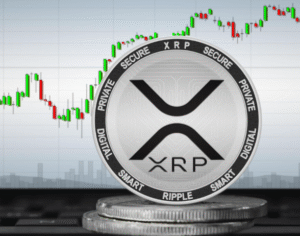$BTC $ETH #Bitcoin #CryptoMining #MidTierMiners #Blockchain #BitcoinHalving #Cryptocurrency #MiningCompetition #Decentralization #CryptoNews #Investing
Who’s Winning the Bitcoin Mining Race Post-Halving and Why It Matters?
In recent months, mid-tier news has underscored a significant shift in the Bitcoin mining landscape. Following the latest halving event, smaller Bitcoin miners have gained momentum, increasing their hashrate and, notably, their debt levels. This evolution is not just a statistical anomaly; it represents a profound change in the industry’s balance of power.
The halving, which occurs every four years, effectively reduces the rewards miners receive for validating transactions on the Bitcoin network. This event is crucial for the market, as it typically leads to an increase in Bitcoin’s price. However, the immediate aftermath has seen smaller miners emerging as formidable competitors, reshaping the competitive landscape.
The Rise of Smaller Miners
Historically, Bitcoin mining has been dominated by large-scale operations that benefit from economies of scale. However, the recent surge in smaller miners indicates a shift. These mid-tier operations are not only increasing their hashrate but also leveraging debt to finance their operations. This strategic move allows them to invest in more efficient equipment and expand their mining capabilities, thereby increasing their competitiveness.
As a result, the competitive dynamic is changing. Larger mining entities are now facing pressure from these mid-tier miners, who are becoming more innovative and agile in their operations. This shift could lead to a more decentralized mining landscape, which is essential for the health and security of the Bitcoin network.
The Impact of Increased Debt on Mining Operations
Debt is often viewed as a double-edged sword. For mid-tier miners, taking on debt can fuel growth by enabling investments in advanced mining technology and infrastructure. However, it also introduces risk, especially in a volatile market like cryptocurrency. If Bitcoin prices were to drop significantly, these miners could find themselves in a precarious financial situation, struggling to cover their debt obligations.
Nonetheless, the current market environment, characterized by rising Bitcoin prices post-halving, has provided a favorable backdrop for these miners to expand. As they increase their operational capacity, they may be better positioned to capture market share from larger competitors, particularly if Bitcoin continues its upward trajectory.
Why This Shift Matters for Investors
The implications of these changes in the mining sector extend beyond the miners themselves. For investors, understanding the evolving landscape of Bitcoin mining is crucial. With mid-tier miners gaining ground, the competitive pressure on larger mining operations could lead to increased innovation and efficiency throughout the industry.
Moreover, as the market continues to mature, the potential for new investment opportunities arises. Investors may find value in supporting these smaller, agile miners that are redefining the mining ecosystem. The more diversified landscape also contributes to the overall health of the Bitcoin network, making it more resilient against centralization risks.
In conclusion, the post-halving period has ushered in a new era for Bitcoin mining, characterized by the ascent of mid-tier miners. As these smaller operations continue to gain influence, the broader implications for the Bitcoin ecosystem could be substantial. For those looking to stay informed about the latest developments, visiting relevant text in the crypto space is essential.
To explore various investment strategies in this dynamic environment, consider checking out relevant text for more information on trading platforms and tools.







Comments are closed.